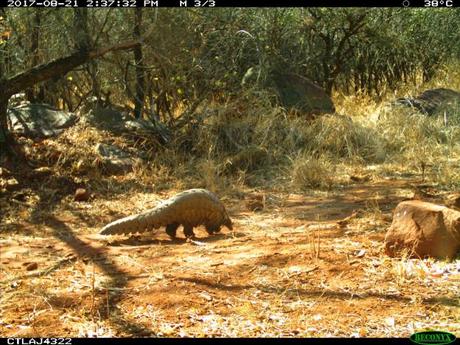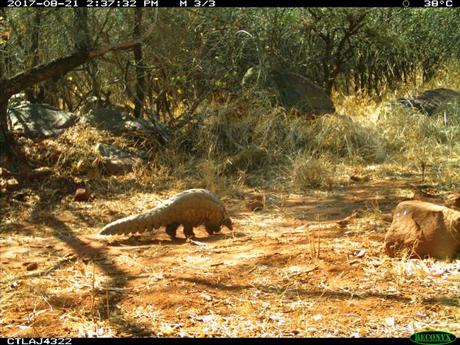
The ground pangolin ( Smutsia temminckii), also referred to as the Cape pangolin, scaly anteater or the South Africa pangolin has recently been spotted on the PPP camera grid. The presence of this elusive species was last recorded on our camera traps in 2015. Station 22, the location where the images were captured, has only recorded pangolin images once before since the cameras were deployed in 2011.


The word 'pangolin' is derived from the Malay word 'pengguling' meaning something that rolls up. The ground pangolin is one of eight armour-plated species belonging to the order Pholidota, which are distinguished from other mammals by their imbricated protective scales, formed from tightly fused hairs. This species is primarily nocturnal and solitary, making the discovery of a pangolin during daylight hours, a rather pleasant and surprising find.
This charismatic species are currently severely under threat due to an increase in local and international trade for bushmeat and traditional medicinal purposes. They have the unfortunate title of 'the world's most trafficked mammal'. Additional threats include traffic accidents, the construction of electrified fences, and incidental mortalities in gin traps; all of which are injurious to pangolin populations when combined with their long-lived, slow producing life history strategies. However, their typically secret existence suggests their populations may be somewhat underestimated.
Some interesting facts about the ground pangolin:
- Pangolins have no teeth. Instead they possess a long conical tongue to retrieve their prey, which can be extended 10-15cm beyond the lips then retracted into a pouch located in the throat when not in use. Sand ingested with the withdrawal aids mastication of food items.
- They often seek refuge in burrows which were dug by other species, with a preference to use burrows dug by anteaters and spring hares.
- They have thick eyelids, which is suggested to be to prevent their eyes from ant bites.
- Pangolins are surprisingly very capable swimmers.
- This species is insectivorous, more specifically, they have a myrmecophagous feeding behaviour, defined by the consumption of ants and termites. In the case of the pangolin it has only been observed consuming approximately 19 species of formicid ants and termites.
- In one night pangolins can feed up to 90 times, with each execution lasting around a minute.
- The pangolin can roll into an almost impenetrable ball when threatened, wrapping its muscular tail around its unprotected underside leaving only sharp scales exposed.
Although the PPP camera grid in the Soutpansberg is positioned to primarily assess leopard densities, home range, survival and recruitment rates alongside activity patterns of other members of the carnivore guild, the camera traps are providing excellent sightings of other unique species on the mountain, including the ground pangolin!
